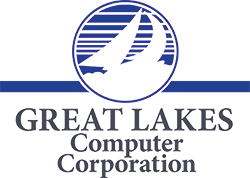The underlying backbone of all digital and IT security for any individual, organization or business is data backup. The reason why boils down to this: Even if you lose everything else, suffer a massive hack, or lose your IT assets to some major physical disaster, a strong data backup will at least keep your core data safe so that you can rebuild from it. Let’s delve into some data, statistics, and best practices that demonstrate the importance of data backup and key best practices for making your own truly strong.
Why Data Backups Matter
Your organization’s information is incredibly vital and irreplaceable. While you might be able to use borrowed funds, investor cash, and your own money to replace lost physical property or software, no amount of money will let you buy back the years of financial history, sales figures, IP, client data, media archives and uncountable other types of slowly built-up key information if you lose them.
This is one of the main reasons why up to 93% of organizations that lose their data also go bankrupt within a year or two of doing so. The best defense is to set up a robust, frequently updated, interlocking backup plan.
Understanding Threats to Your Data
The kinds of things that can threaten the safety of your data are countless. On the one hand, there are all the usual physical dangers. Events like a building fire, earthquake, flood, electrical storm, and other disasters that can physically damage or destroy the data you have stored in your office or operations center.
Then there are software and hardware failures. Hard drives of all kinds have a limited lifespan before they present a risk of suddenly and catastrophically failing. This is why an estimated 140,000 of them crash each week in the U.S alone.
Data backup software suites can also fail. Usually through security breaches and update errors, or because the companies behind them go out of business. Even your own remote backup locations, such as a second office or your own home, can be potential failure sources. Especially if all of your physical backup locations are in the same geographic area.
Then there are hackers and cybercriminals. They definitely know about the value of information and just how irreplaceable it can be. This is why they go to such great lengths to breach databases with valuable business data. And in some cases, lock everything down with ransomware encryption until you pay a huge “fee” for having it unlocked. Up to 29% of data loss incidents among businesses and organizations stem from this one threat alone.
Finally, there are your own employees. They can make mistakes at any time when managing the security, physical integrity, and digital accessibility of your data. These mistakes can lead to you losing part or even all of your data in some way.
With all of these threats, it might seem that reliable data backup solutions are next to impossible. But they aren’t!
Data Backup Tips
Your backup’s main line of defense should be a formal, methodical plan for preventing data loss in the first place. This means taking steps such as:
-
-
- Noting the purchase dates of your own backup hardware components and having a schedule for their regular replacement.
-
- Ensuring that your data is prioritized by order of importance and providing increasingly secure, multiply redundant backups for the most vital information on downward.
-
- Carefully scheduling regular backups of all data and being especially careful to frequently backup information that’s frequently updated.
-
- Maintaining multiple, regularly scheduled local backups of your data to hardware that you own.
-
- Using IT protection services to monitor your organization’s endpoints and internal systems for potential penetration threats, possible breaches and security weaknesses.
-
- Using the services of an external data protection provider to keep and also regularly back up remote copies of all locally stored data.
-
- Keeping your login credentials for email and other remote software data services secure.
- Extracting regular copies of your email and other data stored with third parties in case of lock-out.
-
If you can ensure that the steps above are routinely followed, your data will be well protected. You should also regularly test your own backups across all fronts for accessibility, data integrity, and how up-to-date they are. One way to do this is by scheduling a full restoration of all backed-up applications, virtual machines, databases, and archived data regularly. Ensure that the copies not only restore smoothly but that they’re free of errors or corrupted sections.
Assess your Own Data Protection Readiness
Not sure how secure your critical business data is against loss and corruption? You should find out as soon as possible so that you can begin the process of protecting your files using the best practices available today.
To uncover your own level of preparedness and to know what your next steps are, take this Business Continuity and Disaster Recovery (BCDR) assessment today and see how well your BCDR is aligned with your data protection needs. Great Lakes Computer Corporation can diagnose where your data security can improve using the best practices available today while also offering powerful, backup and recovery solutions for your most critical business data.
[/vc_column_text][/vc_column][/vc_row]


